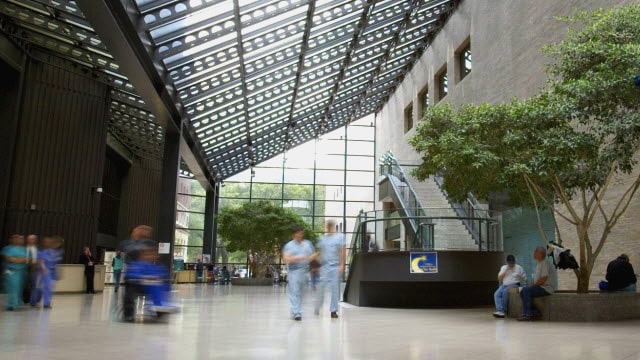At a time of digitalization, the health sector, like many others (industry, retail, banking, etc.), must reinvent itself. Patients have become more demanding with processing times, punctuality, quality, etc., and healthcare professionals are now scrutinized through applications. With the digital age, reputation and quality of service have become more important. Technology is revolutionizing health care in many ways. It makes hospital stays less stressful and more enjoyable, gives practitioners more time to devote to patients and personalizes care making it less invasive.
By Frédéric Aguilar, Technical Director France at Extreme Networks.
By next year, the health sector is expected to have nearly 30 billion medical devices and connected equipment. A “connected” hospital relies on IoT technology throughout its structure to improve both care support and patient satisfaction. This means that all medical devices and intelligent sensors are connected to the network, either via cable or Wi-Fi, to facilitate machine-to-machine communication and an abundance of useful and intelligent data.
In the health field, the possibilities offered by this technology are endless. Let’s review some simple examples that can be implemented for the benefit of healthcare professionals and patients. The implementation of vital signs monitoring systems, which analyze large volumes of data and transfer them in real time directly into the hospital’s Electronic Health Record (EHR) system, would save caregivers up to 30% of time spent transcribing patient constants, making it easier to listen to and support patients.
“Thanks to machine learning, it is just as easy to imagine that the bed could automatically adjust itself to proactively prevent wounds.”
Another form of connected health innovation is the emergence of sensors, via electrical wires integrated into beds. Such devices would facilitate, among other things, monitoring a patient’s humidity level and movements in order to alert the nursing staff of potential infection or injury. Thanks to machine learning, it is just as easy to imagine that the bed could automatically adjust itself to proactively prevent wounds.

IoT is also at the heart of enriching the patient experience. Patients will gain more autonomy so that they can easily control their environment: lighting, air conditioning, entertainment systems, etc. Additionally, digital medicine, in the form of pills with microscopic sensors, could improve the treatment of certain conditions such as hypertension or psychiatric disorders by ensuring appropriate use. 50% of prescribed drugs are not taken in accordance with the prescription.
Such cases are no longer just figments of our imagination. This technology is already being developed or implemented in some pioneering facilities. In New York, Mount Sinai Medical Center was able to reduce emergency room wait times for 50% of patients using IoMT (Internet of Medical Things) software.
“In New York, Mount Sinai Medical Center was able to reduce emergency room wait times for 50% of patients using IoMT (Internet of Medical Things) software.”
With the development of medical IoT, the digital health market is expected to reach a value of $206 billion next year. With IoMT, hospitals are looking at ways to reduce readmission rates (by having patients go through telemedicine to reduce unnecessary consultations), minimize costs and reach patients more broadly through the implementation of remote services.

Portable and remote monitoring devices allow practitioners to monitor patients after they leave the hospital, keep them informed of their recovery and reduce the overall cost of health problems or chronic diseases due to aging. Health care providers also use mobile health applications Qare (for telemedicine), Epiderm (for dermatological follow-up) and Mydiabby (for diabetics) which support patients in the daily monitoring of their health depending on the condition.
“With the development of medical IoT, the digital health market is expected to reach a value of $206 billion next year.”
What are we waiting for to implement this technology? Our society is increasingly dependent on care and emotional support. Furthermore, these technologies have the potential to streamline caregiver processes, foster commitment and satisfaction for better health care outcomes, and most importantly, improve patient understanding and service. And that’s not to mention the $300 billion in annual health care spending that the IoMT would save.
In this context, public authorities and hospitals must not be hesitant when considering the technical nature of the development and hosting of the IoT. Market players have recognized the importance of simplifying their model to ensure a reliable network connection and a seamless patient/healthcare professional experience while integrating the critical dimension of infrastructure and data security. For health professionals, choosing an intelligent health service also means managing and controlling the associated risks–something they are already familiar with.











